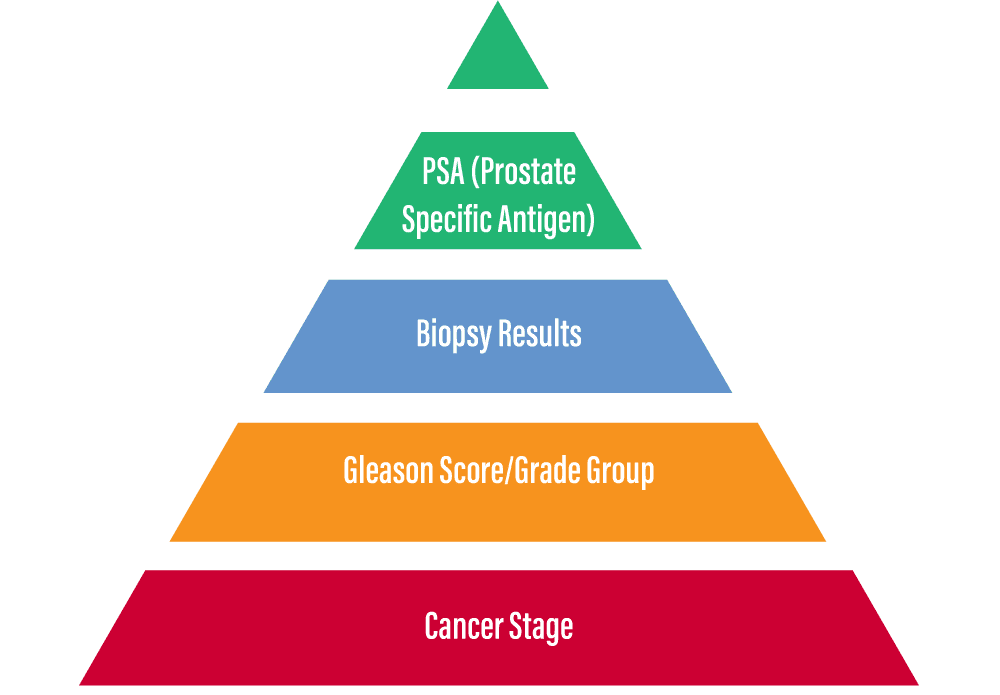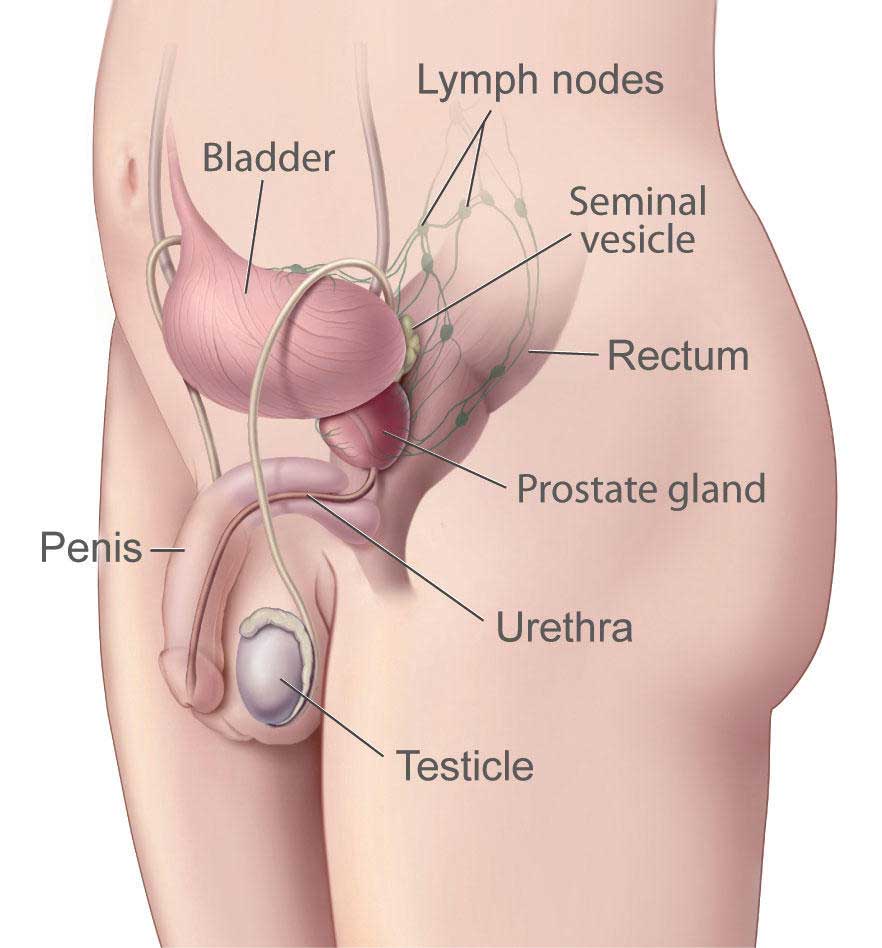Understanding Your Risk Level
When Newly Diagnosed
Treatment options for men newly diagnosed with prostate cancer are based on their risk level, which is determined by:

Patients should obtain this medical information from their doctors
Understanding Your Risk Levels
Risk levels for patients initially diagnosed with prostate cancer before any treatment
Doctors use disease features including (but not limited to) those listed below to determine prostate cancer risk group.
Very Low
Patients with an initial diagnosis of PSA less than 10, Gleason 6/Grade Group 1, and less than 3 biopsy cores positive for cancer. Cancer found by needle biopsy and cannot be felt during exam. (Stage 1)
Low
Patients with an initial diagnosis of PSA less than 10, Gleason 6/Grade Group 1. Cancer involves one half of one side of the prostate or less. (Stage 1)
Intermediate Favorable
Patients with an initial diagnosis that includes one of the following: Gleason 7/Grade Group 2, PSA 10-20, or cancer involves more than one-half of one side of the prostate or involves both sides of the prostate. (Stage 1 or 2)
Intermediate Unfavorable
Patients with an initial diagnosis of Gleason 7/Grade Group 3 or that includes 2 or 3 of the following: Gleason 7/Grade Group 2, PSA 10-20, cancer involves more than one-half of one side of the prostate or both sides of the prostate. (Stage 1 or 2)
High
Patients with an initial diagnosis that includes one or more of the following: PSA more than 20, Gleason 8-10/Grade Group 4-5, tumor has spread a little outside of the prostate or to nearby organs. (Stage 2 or 3)
Very High
Patients with an initial diagnosis that includes two or more of the following: PSA more than 40, Gleason 8-10/Grade Group 4-5, tumor has spread a little outside of the prostate or to nearby organs. (Stage 3)
Regional
Patients with an initial diagnosis of cancer spread to nearby lymph nodes – Regional; Any PSA, Gleason/Grade Group. (Stage 4A)
Metastatic
Patients with an initial diagnosis of cancer spread to distant parts of the body – metastatic; Any PSA, Gleason/Grade Group. (Stage 4B)
Referenced with permission from the NCCN Clinical Practice Guidelines in Oncology (NCCN Guidelines®) for Prostate Cancer V.2.2025 © National Comprehensive Cancer Network, Inc. 2025. All rights reserved. The complete and current version of the guideline is available at NCCN.org.
PSA Number
The PSA number is a measure of how much PSA is in the blood stream, which is an indication of the volume of cancer present at the time of diagnosis.
Biopsy Results
A biopsy needle is used to take tissue (usually 12 cores) from the prostate gland which is examined under a microscope to see if cancer is present. The tissue will also be used to determine the Gleason score if cancer is present.
Gleason Score
The Gleason score is a measure of how aggressive the cancer is.
6 or less – The cancer is likely to grow and spread very slowly; low grade.
7 – The cancer is likely to grow and spread at a modest pace; favorable intermediate with few aggressive cancer cells; unfavorable intermediate with more aggressive cells.
8, 9 or 10 – Cancer is likely to grow and spread fast; high grade.
Grade Groups
Grade groups are based on the Gleason score and intended to be a more simplified measure of cancer aggressiveness.
1 = Gleason score 6 or less
2 = Gleason score 7 favorable
3 = Gleason score 7 unfavorable
4 = Gleason score 8
5 = Gleason score 9 or 10
Cancer Stage
Imaging and other tests are used to determine where the cancer is within the patient’s body.
- Localized (Stage 1) – Cancer is located within the prostate gland only in one lobe.
- Locally Advanced (Stage 2) – Cancer is still within the prostate gland but in both lobes and maybe spread to seminal vesicles.
- Regional (Stage 3) – Cancer has spread beyond the prostate to nearby lymph nodes and possibly to other nearby tissues.
- Metastatic (Stage 4) – Cancer has spread beyond the prostate to distant parts of the body such as bone and other organs.

IMPORTANT:
This information is provided for educational purposes only to support patients in understanding and discussing appropriate treatment options with their doctors. Included is information from treatment guidelines for doctors and other sources. However, this information should not be considered as patient treatment guidelines or recommendations, but as educational materials only. Patients should discuss treatments identified herein with their doctors to understand the risks and benefits of each based on their personal diagnosis. Treatment decisions should only be made between the patient and his doctor.
